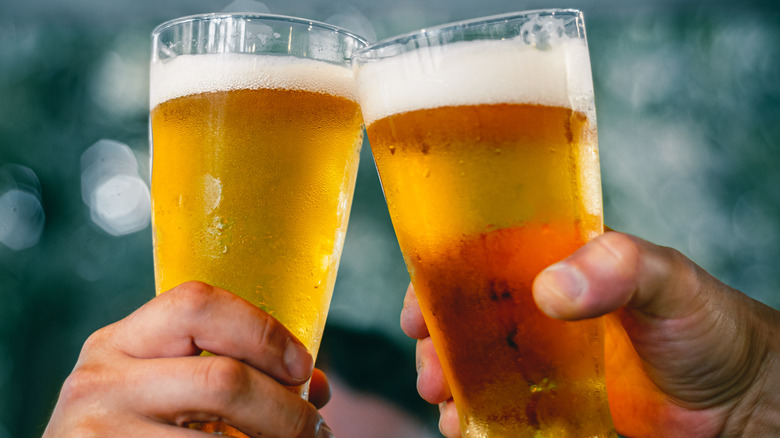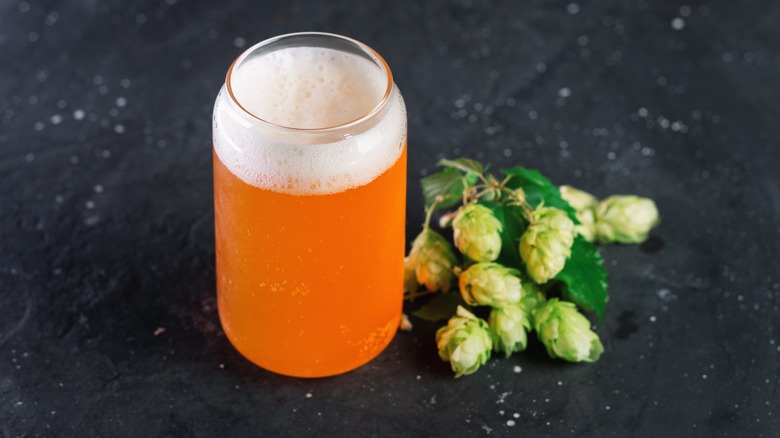What's The Difference Between IPA And Double IPA?
There are certain nights that call for a round of whatever regionally preferred cheap beer flows from the taps like water. If you're in the Pacific Northwest, it'll likely be Rainier. If you're in Pittsburgh or Philadelphia, Yuengling will do. Otherwise, you'll almost always find brands like Miller, Coors, and Budweiser on deck at any given dive across the country. But other times, a chug-friendly lager or light beer just isn't the vibe. If you want something a little more complex, with significantly more hops, and you want to drink it from a tall glass as opposed to a bottle or a can, IPAs are perfect for these occasions.
India pale ale, known as IPA, was named during the British Colonial era by English sailors who used hops to keep their beer fresh on their journey to India (via VinePair). Because IPAs have more hops than other beer varieties, they're known for their bitter taste, which often comes with floral and citrus notes. But not all IPAs are created equal. If you're too embarrassed to ask your bartender about the difference between regular IPAs and double IPAs, read on.
Double the IPA, double the hops
According to Just Beer, a double IPA is exactly what it sounds like: an IPA with extra hops. Unlike the single IPA, the double IPA — also known as the imperial IPA — was invented in the U.S. to satisfy the palettes of hops lovers. In addition to more bitterness, a double IPA usually has a richer texture than a single IPA, as well as a caramel flavor thanks to added malt, per Just Beer. Plus, since they take twice as long to brew, double IPAs typically contain more alcohol than single IPAs and other beers (via BeerAdvocate).
If you really want to impress a group of beer plebeians, you can talk about the difference between a West Coast IPA (which is more fruit-forward and hop-centric) and an East Coast IPA (which is closer to the original British recipe), per Hop Culture. Now that you know the differences between IPAs, it's time to crack one open.

